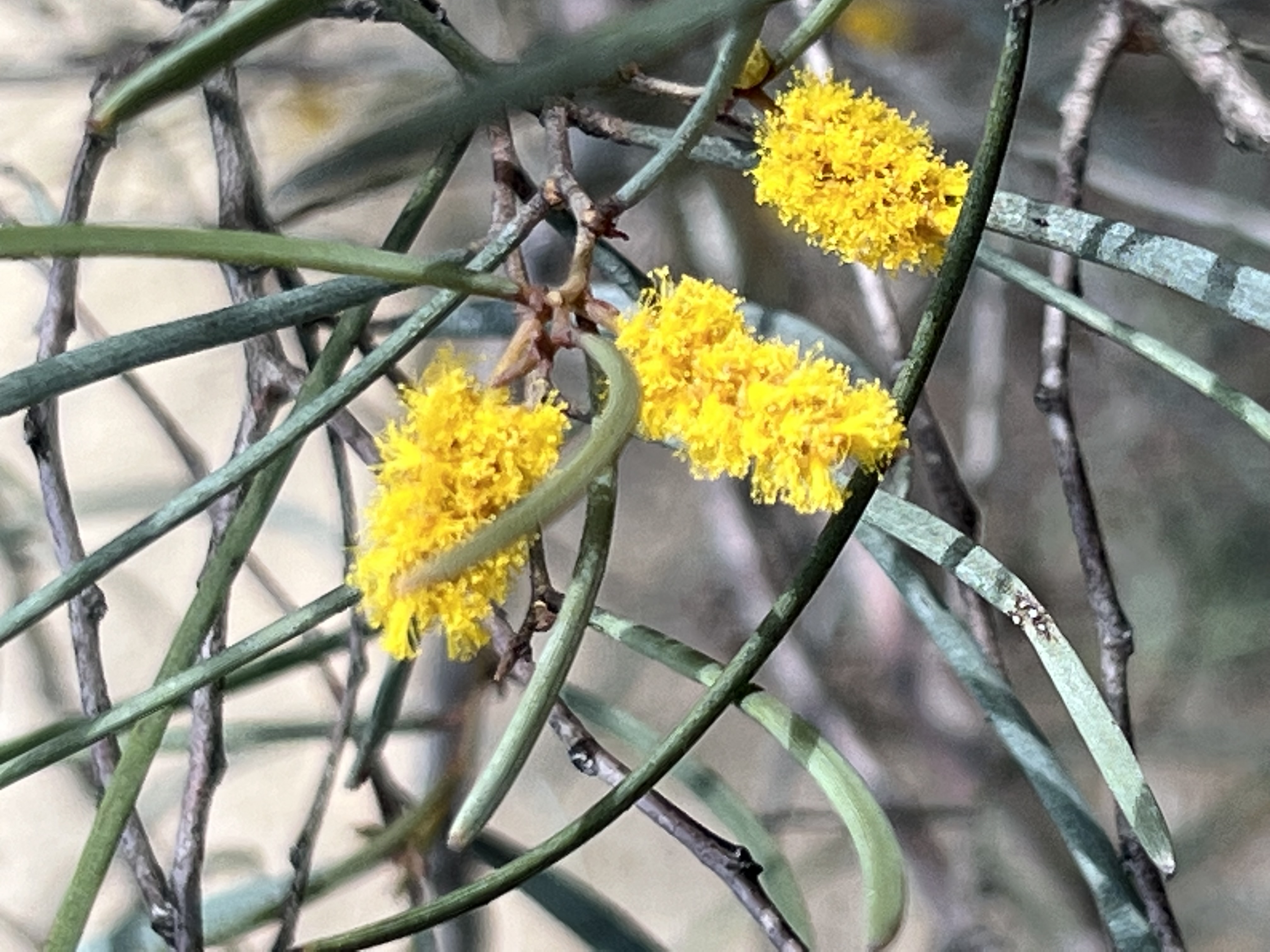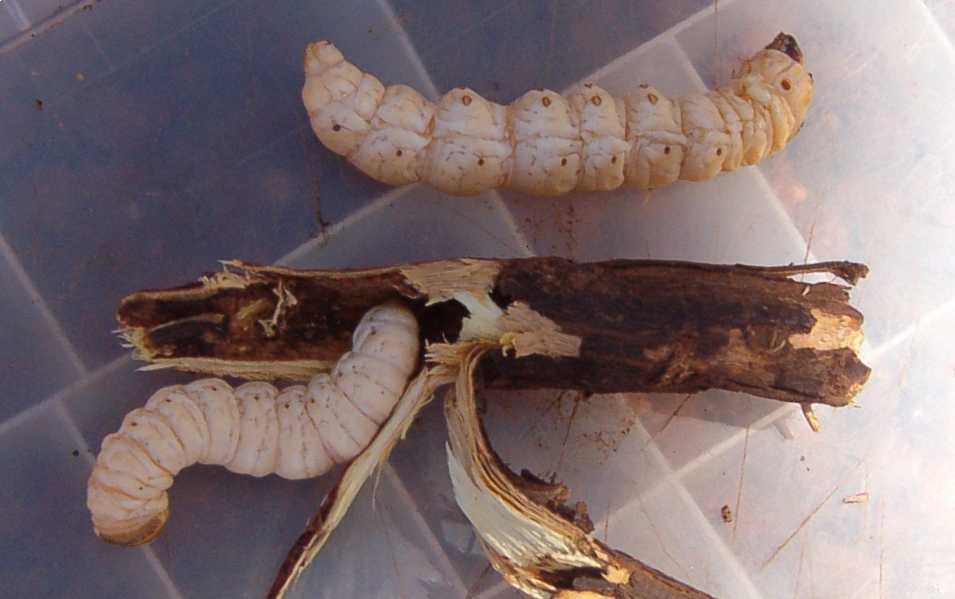|
Umbrella Bush
''Acacia ligulata'' is a flowering plant in the family Fabaceae. It is a dense, rounded shrub with bright yellow flower heads and is widespread in all states of mainland Australia. Its common names include sandhill wattle, umbrella bush, marpoo, dune wattle, small coobah, wirra, and watarrka (also spelt watarka). Etymology and naming The genus ''Acacia'' is derived from the Greek ''akakia'', referring to sharp thorns. The shape of the phyllodes named the species ''ligulata'', meaning strap-like or with a small tongue in Latin.Simmons, M. H. (1988). Acacias of Australia, vol. 2. Ringwood, Australia: Penguin Books Australia Ltd. p. 166. Common names include sandhill wattle, umbrella bush, marpoo, dune wattle, small coobah,Cunningham, G. M., Mulham, W. E., Milthorpe, P. L., & Leigh, J. H. (1992). Plants of western New South Wales. Melbourne & Sydney, Australia: Inkata Press. p. 365. wirra,Moore, P. (2005). A guide to plants of inland Australia. Sydney, Australia: New Holland Publ ... [...More Info...] [...Related Items...] OR: [Wikipedia] [Google] [Baidu] |
Allan Cunningham (botanist)
Allan Cunningham (13 July 1791 – 27 June 1839) was an English botany, botanist and List of explorers, explorer, primarily known for his expeditions into uncolonised areas of eastern Australia to collect plants and report on the suitability of the land for grazing purposes. Early life Cunningham was born in Wimbledon, London, England, the son of Allan Cunningham (head gardener at Wimbledon Park House), who came from Renfrewshire, Scotland, and his English wife Sarah (née Juson/Jewson née Dicken). Allan Cunningham was educated at a Putney private school, Reverend John Adams (educational writer), John Adams Academy and then went into a solicitor's office (a Lincoln's Inn Conveyancer). He afterwards obtained a position with William Townsend Aiton superintendent of Royal Botanic Gardens, Kew, Kew Gardens, and this brought him in touch with Robert Brown (Scottish botanist from Montrose), Robert Brown and Joseph Banks. Brazil On Banks' recommendation, Cunningham went to ... [...More Info...] [...Related Items...] OR: [Wikipedia] [Google] [Baidu] |
Acacia Aneura
''Acacia aneura'', commonly known as mulga, is a species of flowering plant in the family Fabaceae and is endemic to inland Australia. It is a variable shrub or small tree with flat, narrowly linear to elliptic phyllodes, cylindrical spikes of bright yellow flowers and more or less flat and straight, leathery Pod (fruit), pods. Description ''Acacia aneura'' is a variable shrub or small tree that typically grows to a height of , sometimes up to and is often multistemmed with a bushy Crown (botany), crown. Its phyllodes are flat, narrowly linear to narrowly elliptic, long and mostly wide, straight or slightly curved. The flowers are borne in a cylindrical head in the axils of phyllodes on a hairy Peduncle (botany), peduncle long. The heads are long and bright yellow. Flowering occurs from March to May or August and the pod is more or less straight and flat, long and wide with a winged edge. The pods are papery, brown to greyish-brown, containing elliptic to oblong or e ... [...More Info...] [...Related Items...] OR: [Wikipedia] [Google] [Baidu] |
Diaspores
In botany, a diaspore is a plant dispersal unit consisting of a seed or spore plus any additional tissues that assist dispersal. Examples of such additional structures includes elaiosomes, fruits, pseudofruits or arils, as well as pappi. In a few plants, the diaspore is a tumbleweed and comprises most of the plant. Diaspores are common in weedy and ruderal species. Collectively, diaspores, seeds, and spores that have been modified for migration are known as ''disseminules''. __TOC__ Role in dispersal A diaspore of seed plus elaiosome is a common adaptation to seed dispersal by ants (myrmecochory). This is most notable in Australian and South African sclerophyll plant communities. Typically, ants carry the diaspore to their nest, where they may eat the elaiosome and discard the seed, and the seed may subsequently germinate. A diaspore of seed(s) plus fruit is common in plants dispersed by frugivores. Fruit-eating bats typically carry the diaspore to a favorite perch, where ... [...More Info...] [...Related Items...] OR: [Wikipedia] [Google] [Baidu] |
Acacia Ligulata Seeds
''Acacia'', commonly known as wattles or acacias, is a genus of about of shrubs and trees in the subfamily Mimosoideae of the pea family Fabaceae. Initially, it comprised a group of plant species native to Africa, South America, and Australasia, but is now reserved for species mainly from Australia, with others from New Guinea, Southeast Asia, and the Indian Ocean. The genus name is Neo-Latin, borrowed from Koine Greek (), a term used in antiquity to describe a preparation extracted from ''Vachellia nilotica'', the original type species. Several species of ''Acacia'' have been introduced to various parts of the world, and two million hectares of commercial plantations have been established. Description Plants in the genus ''Acacia'' are shrubs or trees with bipinnate leaves, the mature leaves sometimes reduced to phyllodes or rarely absent. There are 2 small stipules at the base of the leaf, but sometimes fall off as the leaf matures. The flowers are borne in spikes ... [...More Info...] [...Related Items...] OR: [Wikipedia] [Google] [Baidu] |
Herbivores
A herbivore is an animal anatomically and physiologically evolved to feed on plants, especially upon vascular tissues such as foliage, fruits or seeds, as the main component of its diet. These more broadly also encompass animals that eat non-vascular autotrophs such as mosses, algae and lichens, but do not include those feeding on decomposed plant matters (i.e. detritivores) or macrofungi (i.e. fungivores). As a result of their plant-based diet, herbivorous animals typically have mouth structures ( jaws or mouthparts) well adapted to mechanically break down plant materials, and their digestive systems have special enzymes (e.g. amylase and cellulase) to digest polysaccharides. Grazing herbivores such as horses and cattles have wide flat- crowned teeth that are better adapted for grinding grass, tree bark and other tougher lignin-containing materials, and many of them evolved rumination or cecotropic behaviors to better extract nutrients from plants. A l ... [...More Info...] [...Related Items...] OR: [Wikipedia] [Google] [Baidu] |
Kangaroos
Kangaroos are marsupials from the family Macropodidae (macropods, meaning "large foot"). In common use, the term is used to describe the largest species from this family, the red kangaroo, as well as the antilopine kangaroo, eastern grey kangaroo, and western grey kangaroo. Kangaroos are indigenous to Australia and New Guinea. The Australian government estimates that 42.8 million kangaroos lived within the commercial harvest areas of Australia in 2019, down from 53.2 million in 2013. As with the terms " wallaroo" and "wallaby", "kangaroo" refers to a paraphyletic grouping of species. All three terms refer to members of the same taxonomic family, Macropodidae, and are distinguished according to size. The largest species in the family are called "kangaroos" and the smallest are generally called "wallabies". The term "wallaroos" refers to species of an intermediate size. There are also the tree-kangaroos, another type of macropod which inhabit the upper branches of ... [...More Info...] [...Related Items...] OR: [Wikipedia] [Google] [Baidu] |
Rabbits
Rabbits are small mammals in the family Leporidae (which also includes the hares), which is in the order Lagomorpha (which also includes pikas). They are familiar throughout the world as a small herbivore, a prey animal, a domesticated form of livestock, and a pet, having a widespread effect on ecologies and cultures. The most widespread rabbit genera are '' Oryctolagus'' and ''Sylvilagus''. The former, ''Oryctolagus'', includes the European rabbit, ''Oryctolagus cuniculus'', which is the ancestor of the hundreds of breeds of domestic rabbit and has been introduced on every continent except Antarctica. The latter, ''Sylvilagus'', includes over 13 wild rabbit species, among them the cottontails and tapetis. Wild rabbits not included in ''Oryctolagus'' and ''Sylvilagus'' include several species of limited distribution, including the pygmy rabbit, volcano rabbit, and Sumatran striped rabbit. Rabbits are a paraphyletic grouping, and do not constitute a clade, as hares (bel ... [...More Info...] [...Related Items...] OR: [Wikipedia] [Google] [Baidu] |
Cattle
Cattle (''Bos taurus'') are large, domesticated, bovid ungulates widely kept as livestock. They are prominent modern members of the subfamily Bovinae and the most widespread species of the genus '' Bos''. Mature female cattle are called cows and mature male cattle are bulls. Young female cattle are called heifers, young male cattle are oxen or bullocks, and castrated male cattle are known as steers. Cattle are commonly raised for meat, for dairy products, and for leather. As draft animals, they pull carts and farm implements. Cattle are considered sacred animals within Hinduism, and it is illegal to kill them in some Indian states. Small breeds such as the miniature Zebu are kept as pets. Taurine cattle are widely distributed across Europe and temperate areas of Asia, the Americas, and Australia. Zebus are found mainly in India and tropical areas of Asia, America, and Australia. Sanga cattle are found primarily in sub-Saharan Africa. These types, sometime ... [...More Info...] [...Related Items...] OR: [Wikipedia] [Google] [Baidu] |
Nacaduba Biocellata
''Nacaduba biocellata'', the double-spotted line blue, is a butterfly of the family Lycaenidae. It is found in Australia (including New South Wales, the Northern Territory, South Australia, Victoria and Western Australia), Singapore, the New Hebrides, Sumba and Bali. The wingspan is about 20 mm. Adult females have a brown upperside, while the males are blue with narrow black margins. The underside of both sexes is pale brown with light and dark wavy lines. The larvae feed on the shoots, flowers and buds of various ''Acacia'' species, including '' A. aneura'', '' A. betchei'', '' A. brachybotrya'', '' A. deanei'', '' A. erinaceae'', '' A. irrorata'', '' A. karroo'', '' A. ligulata'', '' A. osswaldii'', '' A. penninervis'', '' A. rigens'', '' A. salicina'', '' A. sclerophylla'', '' A. sowdenii'' and '' A. victoriae''. They can have a wide range of colours depending on their host plant, including pink, orange, yellow or green. They are attended by ants, mostly ''Iridomyrmex ... [...More Info...] [...Related Items...] OR: [Wikipedia] [Google] [Baidu] |
Witchetty Grub
The witchetty grub (also spelled witchety grub or witjuti grub) is a term used in Australia for the large, white, wood-eating larvae of several moths. In particular, it applies to the larvae of the Cossidae, cossid moth ''Endoxyla leucomochla'', which feeds on the roots of the Acacia kempeana, witchetty bush (after which the grubs are named) that is widespread throughout the Northern Territory and also typically found in parts of Western Australia and South Australia, although it is also found elsewhere throughout Australia. The term can also apply to larvae of other cossid moths, ghost moths (Hepialidae), and longhorn beetles (Cerambycidae). The term is used mainly when the larvae are being considered as food. The grub is the most important Entomophagy, insect food of the desert and has historically been a staple in the diets of Aboriginal Australians. Terminology The Arabana language, Arabana term for the grub is (with emphasis on initial syllables); means grub, and refer ... [...More Info...] [...Related Items...] OR: [Wikipedia] [Google] [Baidu] |
Olympic Dam, South Australia
The Olympic Dam mine is a large poly-metallic underground mine located in South Australia, NNW of Adelaide. It is the fourth largest copper deposit and the largest known single deposit of uranium in the world. Copper is the largest contributor to total revenue, accounting for approximately 70% of the mine's revenue, with the remaining 25% from uranium, and around 5% from silver and gold. BHP has owned and operated the mine since 2005. The mine was previously owned by Western Mining Corporation. Since the 1970s environmentalists, traditional owners and others have campaigned against the mine, largely on the basis of its contribution to the nuclear cycle and its use of underground water. Since it opened in 1988, an extensive underground mine, an integrated metallurgical processing plant and expansive open-air tailings storage facilities have been constructed. The adjacent Olympic Dam mining centre and the nearby township of Roxby Downs service the mine and accommodate its wor ... [...More Info...] [...Related Items...] OR: [Wikipedia] [Google] [Baidu] |
Bioassay
A bioassay is an analytical method to determine the potency or effect of a substance by its effect on animal testing, living animals or plants (''in vivo''), or on living cells or tissues (''in vitro''). A bioassay can be either quantal or quantitative, direct or indirect. If the measured response is binary, the assay is mwod:quantal, quantal; if not, it is Quantitative research, quantitative. A bioassay may be used to detect biological hazards or to give an assessment of the quality of a mixture. A bioassay is often used to monitor water quality as well as wastewater discharges and its impact on the surroundings. It is also used to assess the environmental impact and safety of new technologies and facilities. Bioassays are essential in pharmaceutical, medical and agricultural sciences for development and launching of new drugs, vitamins, etc. Principle A bioassay is a biochemical test to estimate the potency of a sample compound. Usually this potency can only be measured rela ... [...More Info...] [...Related Items...] OR: [Wikipedia] [Google] [Baidu] |









